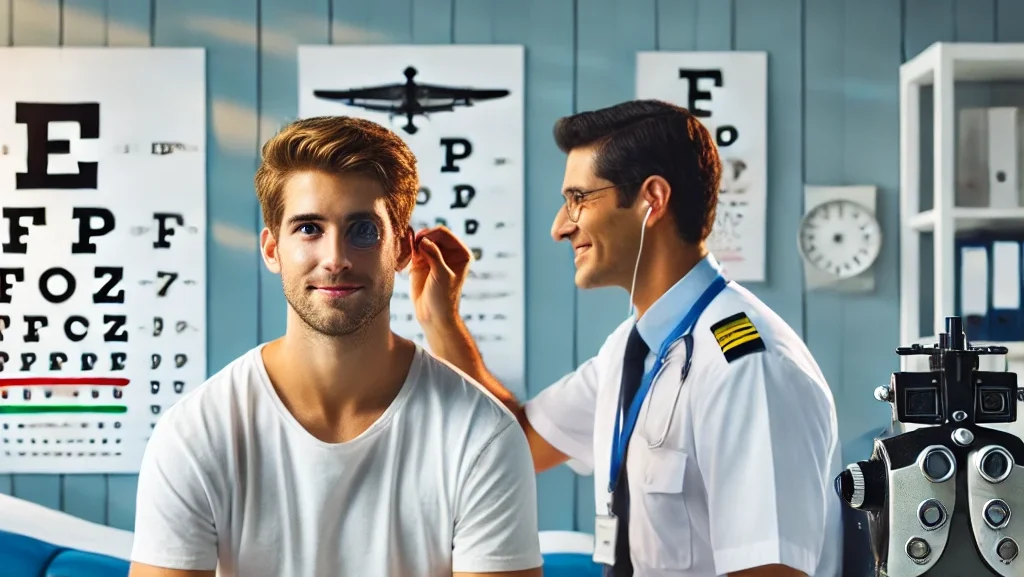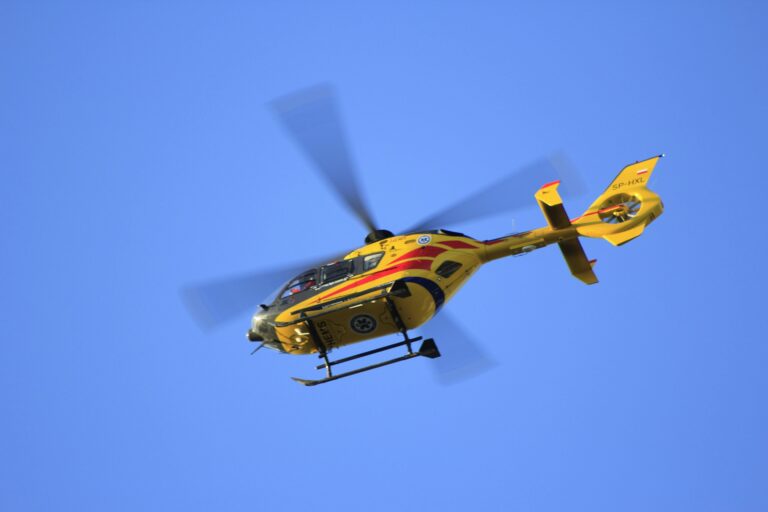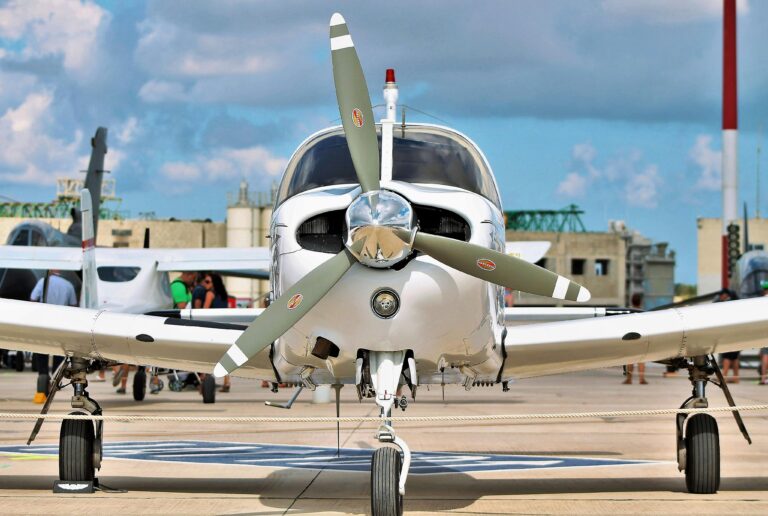Second Class Medical Certificate: Guide for Aspiring Pilots
The Second Class Medical Certificate is a crucial step for anyone pursuing a career in commercial aviation. If you’re like me—planning to study for a Commercial Pilot License—you may already be feeling a mix of excitement and apprehension about this requirement.
I find myself eagerly looking forward to obtaining my certificate, but there’s always that lingering thought: What if there’s a medical condition I’m unaware of that could disqualify me?
Fortunately, as of now, I meet all the known requirements. In this article, I’ll break down everything you need to know about the Second Class Medical Certificate, including its purpose, requirements, the examination process, and how it compares to other medical certifications.
What Is a Second Class Medical Certificate?
A Second Class Medical Certificate is issued by the Federal Aviation Administration (FAA) and is required for pilots who aim to work in commercial aviation, including roles like:
- Commercial helicopter pilots
- Crop-dusting pilots
- Charter pilots
Unlike a Third Class Medical Certificate, which is typically sufficient for private pilots, the Second Class Medical Certificate involves stricter health and vision standards. This ensures that commercial pilots can safely operate aircraft and protect the safety of passengers and crew.
You will be interested: Cessna 172: The People’s Airplane and a Timeless Icon
Why Is the Second Class Medical Certificate Important?
The Second Class Medical Certificate validates that a pilot’s mental, physical, and visual health meet the FAA’s safety standards for commercial flight operations. For aspiring pilots, it serves as both a checkpoint and a motivator to maintain overall health.
When I think about obtaining this certificate, I see it as a necessary step toward achieving my dream of becoming a commercial helicopter pilot. However, the anticipation of the medical exam also comes with some nervousness. After all, even minor issues, such as uncorrected vision problems or undiagnosed conditions, could affect eligibility.
Who Needs a Second Class Medical Certificate?
The Second Class Medical Certificate is mandatory for pilots engaged in the following activities:
- Commercial Pilots: Flying for compensation or hire, such as helicopter tours or cargo operations.
- Flight Instructors: If receiving compensation for their services, though a Third Class Medical may suffice for some.
- Corporate Pilots: Operating aircraft for private companies.
- Aerial Work Pilots: Including crop-dusting and firefighting operations.
How to Apply for a Second Class Medical Certificate
Here’s a step-by-step process for obtaining your Second Class Medical Certificate:
1. Complete the FAA MedXPress Application
Before scheduling your medical exam, you’ll need to fill out the FAA MedXPress application online. This form requires personal information, medical history, and any prior medical conditions. Be honest and thorough, as discrepancies could delay or complicate your certification process.
2. Schedule an Appointment with an Aviation Medical Examiner (AME)
Once your MedXPress application is complete, schedule an appointment with an FAA-approved Aviation Medical Examiner (AME). You can find a directory of AMEs on the FAA’s website.
3. Undergo the Medical Examination
The medical examination involves several steps, including:
- Vision Tests: To assess distance, near vision, and color perception.
- Hearing Tests: To ensure you can hear and respond to cockpit communications.
- Physical Exam: A general assessment of your overall health, including blood pressure and cardiovascular health.
- Neurological Tests: To check for reflexes and coordination.
- Medical History Review: To confirm there are no conditions that could impair flight performance.
Second Class Medical Certificate Requirements
The FAA has established rigorous medical standards for the Second Class Medical Certificate, as pilots in commercial aviation are responsible for the safety of passengers, crew, and the aircraft. Below, you’ll find an in-depth look at the core requirements:
1. Vision Standards
Pilots rely heavily on their vision to safely navigate aircraft, identify hazards, and interpret flight instruments. The vision standards for the Second Class Medical Certificate ensure a pilot’s visual capabilities are up to the challenges of flying:
- Distant Vision: You must have 20/20 vision or better in each eye, whether naturally or with corrective lenses. This standard ensures you can see distant objects clearly, like other aircraft or visual references on the ground.
- Tip: If you wear glasses or contact lenses, make sure your prescription is up to date before the exam.
- Near Vision: You must have 20/40 vision or better in each eye, with or without correction, at a distance of 16 inches. This requirement is crucial for reading cockpit instruments, charts, and navigation equipment.
- Intermediate Vision: For applicants aged 50 and older, the FAA requires 20/40 vision or better at a distance of 32 inches. This ensures you can comfortably view flight instruments that are positioned further away, like in larger cockpits.
- Color Vision: Pilots must be able to accurately distinguish between the colors used in aviation, such as red, green, and white, which are critical for interpreting runway lights, signals, and instrument displays.
- Important: If you fail the color vision test, the FAA may allow alternative testing methods or issue a restriction (e.g., “Not valid for night flight”).
2. Hearing Standards
Clear communication is essential for pilots, especially when interacting with air traffic control (ATC) or communicating with passengers and crew. The FAA hearing requirements include:
- Practical Hearing Test: During the exam, you must be able to hear and respond to a normal conversation or a whisper from a short distance.
- Audiometric Testing (if required): In some cases, you may need to undergo an audiometric test to confirm your ability to hear specific frequencies critical to aviation communication.
3. General Physical Health
Pilots must meet a variety of physical health standards to ensure they are fit to handle the demands of flying. The medical examiner will conduct a thorough review of your overall health, focusing on key areas:
- Cardiovascular Health:
- Blood pressure must be within a normal range, typically below 155/95 mmHg, with or without medication.
- Any history of heart disease, arrhythmias, or surgeries like bypasses may require additional testing or documentation.
- Pulmonary Function:
- Lungs must be free of any chronic respiratory issues, such as severe asthma or COPD, which could impair oxygen levels during flight.
- Endocrine Health:
- Conditions like diabetes are evaluated closely. If you have diabetes, you may need a Special Issuance medical certificate, especially if insulin-dependent.
- Digestive and Renal Systems:
- Conditions such as ulcers, chronic kidney disease, or gastrointestinal surgeries may require additional evaluations.
4. Neurological Health
The FAA requires pilots to have stable and reliable neurological function. This includes:
- Reflex Testing: The medical examiner will check your reflexes, coordination, and motor skills to rule out neurological impairments.
- History of Disorders: Pilots with conditions like epilepsy, seizures, or multiple sclerosis may face restrictions or require special evaluations.
5. Mental Health
Mental and emotional stability are critical in aviation. The FAA evaluates:
- Mental Health History: Conditions like depression, anxiety, or PTSD must be disclosed. While these conditions aren’t always disqualifying, they may require additional documentation or treatment history.
- Substance Abuse: Any history of alcohol or drug abuse must be reviewed. The FAA typically requires evidence of rehabilitation and abstinence for at least two years before issuing a certificate.
6. Medical History Review
During the exam, the Aviation Medical Examiner (AME) will carefully review your medical history. This includes:
- Past surgeries or hospitalizations.
- Chronic conditions like hypertension, diabetes, or arthritis.
- Use of medications, including over-the-counter drugs or supplements.
Be honest and thorough when completing the FAA MedXPress form before your appointment. Undisclosed conditions can lead to delays or even disqualification.
7. Special Issuances and Waivers
If you don’t meet one of the medical requirements, it’s not the end of the road! The FAA offers Special Issuances, which allow pilots with certain medical conditions to fly under specific restrictions or after additional evaluations. For example:
- A pilot with controlled hypertension may still qualify with a waiver, as long as their condition is stable and well-managed.
- Certain visual impairments may be accommodated with restrictions, like “Not Valid for Night Flight.”
Special Issuances are reviewed on a case-by-case basis, so it’s essential to provide detailed medical records and comply with FAA requests.

Preparing for the Medical Exam
Meeting the Second Class Medical Certificate requirements can feel overwhelming, but with preparation, you can approach the process confidently. Here are a few additional steps to get ready:
- Schedule Regular Check-Ups: Address any potential health issues with your primary care physician before your AME exam.
- Bring Documentation: If you have a history of medical conditions, bring all relevant records, test results, or specialist evaluations to your appointment.
- Manage Anxiety: If you’re nervous about the exam, practice relaxation techniques to avoid temporary spikes in blood pressure.
By maintaining a proactive approach to your health, you can significantly improve your chances of passing the medical exam without complications.
How Long Is the Second Class Medical Certificate Valid?
The validity period of the Second Class Medical Certificate depends on your age:
- Under 40 years old: Valid for 12 months for commercial privileges.
- 40 years old or older: Valid for 12 months, but commercial privileges revert to Third Class standards after this period.
Challenges and Concerns: My Personal Perspective
As someone preparing to take the medical exam within the next year, I understand how nerve-wracking this step can be. There’s a constant worry about unknowingly having a disqualifying condition. For example, I’ve read about cases where pilots discovered blood pressure or vision issues only during the exam.
However, I’ve also learned that most disqualifications can be mitigated if you address potential health issues early. The FAA offers options like Special Issuances, which allow pilots to fly under certain conditions despite specific medical issues.
Tips to Prepare for the Second Class Medical Certificate
- Stay Healthy: Prioritize a balanced diet, regular exercise, and sufficient sleep.
- Check Your Vision: Visit an optometrist to ensure your vision meets FAA standards.
- Know Your Medical History: Be ready to disclose and provide documentation for any past conditions.
- Practice Relaxation Techniques: Stress can raise blood pressure temporarily, so stay calm during your exam.
How Does the Second Class Compare to Other FAA Medical Certificates?
The FAA offers three types of medical certificates, each with different standards:
| Certificate | Who Needs It? | Duration (Under 40) | Duration (40+) |
|---|---|---|---|
| First Class | Airline transport pilots | 12 months | 6 months |
| Second Class | Commercial pilots | 12 months | 12 months |
| Third Class | Private pilots | 60 months | 24 months |
You will like it: Complete Guide to Obtaining a Third Class Medical Certificate
Common Reasons for Disqualification
- Uncorrected Vision Problems: Like severe nearsightedness or color blindness.
- Cardiovascular Issues: Including hypertension or heart conditions.
- Neurological Disorders: Such as epilepsy or severe migraines.
- Psychiatric Conditions: Including bipolar disorder or substance abuse.
If any of these apply, the FAA may require additional testing or documentation before granting a certificate.
Final Thoughts
The Second Class Medical Certificate is more than just a formality—it’s a pivotal milestone for anyone aspiring to a career in commercial aviation. For me, it represents a step closer to my dream of becoming a commercial helicopter pilot. While the process can seem daunting, preparation and honesty are key to success.
By maintaining your health and addressing potential medical issues early, you can approach the examination with confidence. Like me, if you’re feeling a mix of excitement and anxiety, remember that you’re not alone—many pilots have successfully navigated this process. With the right mindset and preparation, you’ll be ready to earn your wings.






